The Montjuic hilltop was the birthplace of Barcelona, in the 3rd century BC or earlier, and the site of many of the city’s significant events. With a commanding view to the Mediterranean and the surrounding area, several fortifications were built on hill, the latest being the still-standing 17th-century Montjuic Castle. More recently, the hilltop hosted the 1929 International Exposition and was the main site for the 1992 Barcelona Summer Olympics.
After spending the day at Montserrat, we spent a lazy morning in our hotel room at the Almanac Barcelona, enjoying the terrace and its view to the street below. We watched with interest as a workers from a nearby construction site on narrow Carrer de Pau Claris transferred debris to waiting bins on wider Gran Via de les Corts Catalanes.
Shortly before lunch, we walked from our hotel along the busy pedestrian street La Rambla to Barcelona’s famous marketplace La Boqueria. The massive, and very busy, public market is jammed with colorful fresh produce of all kinds, ranging from seafood, to vegetables, to meats. We were lucky to score two of the rarely vacant seats at Pinotxo Bar, where we had a delicious tapas lunch.
The Montjuic Funicular opened for the 1929 World Exposition, and has been operating continually since. The funicular initially had a second stage to the Montjuic Castle that in 1970 was replaced with the Montjuic Cable Car.
On our way from La Boqueria to Montjuic, we walked past another Gaudi creation, Guell Palace. The mansion was built in the late 19th century for industrial tycoon Eusebi Guell. We rode the funicular up to Parc de Montjuic and then took the cable car to reach the Montjuic Castle. The cable car and castle have great views to Barcelona, and the castle also overlooks the busy Port of Barcelona.
The Barcelona Olympic Stadium at Montjuic originally was built for the 1929 International Exposition, then renovated to be the main stadium for the 1992 Summer Olympics. Nearby is the 446 ft (136 m) Montjuic Communications Tower, erected to transmit television coverage for the games and prominent in the skyline for miles.
The Olympic Stadium is still in use today as a concert and entertainment venue, and is open for visitors to have a look around. When we arrived, thousands of fans were lined up at the facility for the evening’s Beyonce concert, so we didn’t get a chance to go inside. But we did check out the nearby Montjuic Municipal Pool, where the diving and water polo events were held, with its sweeping view to the city.
We enjoyed more views from Montjuic with a stop at Terraza Miramar on the Mediterranean side of the hill.
The Port Vell Aerial Tramway was planned for the 1929 International Exposition, to connect Montjuic with the Barcelona waterfront, but construction wasn’t completed until 1931. It has been a tourist attraction ever since, providing wonderful views to the Port of Barcelona and the surrounding area. The two towers supporting the tramway, 351 ft (107 m) Torre Jaume I and 282-ft (86 m) Torre Sant Sebastia, are prominent features in the Barcelona skyline.
We boarded right below Terraza Miramar and had an excellent ride to Torre Sant Sebastia, where an elevator connects passengers to street level. The route also passes over the team buildings for American Magic, where they are preparing for the 2024 America’s Cup Race in Barcelona.
The lower terminus of the Port Vell Aerial Tramway stands in Barceloneta, a seaside neighborhood popular for its beaches and many restaurants. Several marinas are here as well, including the Marina Port Vell with 151 superyacht berths. Several large vessels were in port or being serviced as we walked past.
We finished our day with dinner at Restaurant Brisa, where we enjoyed one of our new favorite tapas, tomato bread. The dish is very popular in Barcelona and served pretty much everywhere we go. Our table overlooked Port Vell, opposite the buildings for team INEOS Britannia, the challenger of record for the 2024 America’s Cup.
On our way home after dinner, we passed surrealist sculpture The Head of Barcelona created for the Olympics by American Pop artist Roy Lichtenstein, and a 4th-century Roman wall along Carrer de la Tapineria that was built into the 19th-century chapel of Santa Agata.
Our route for the day is shown on the interactive map below.
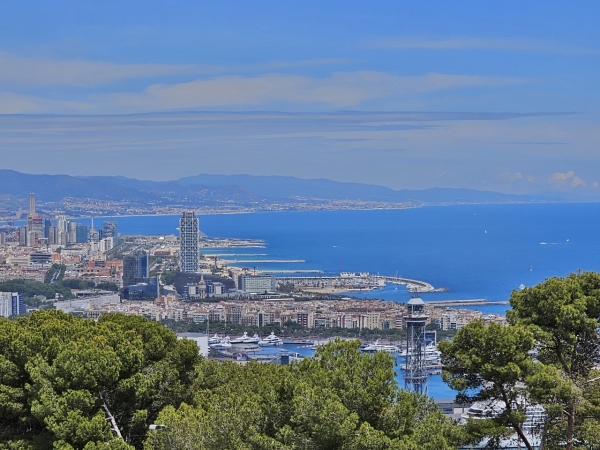

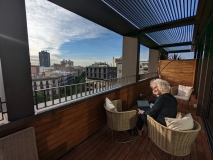
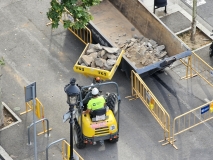

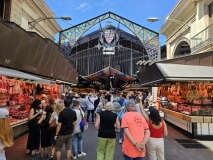
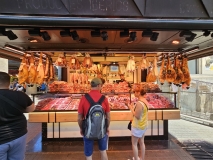
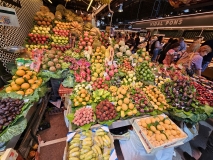
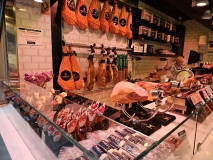
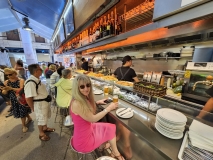
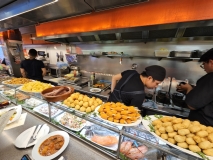
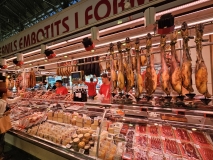

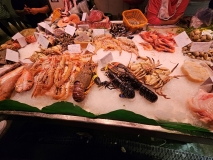
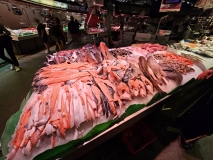
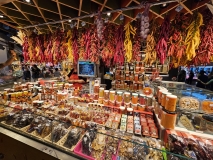
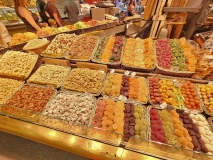
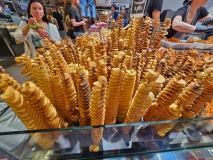
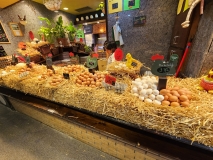

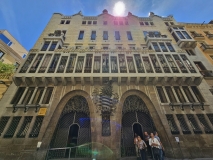
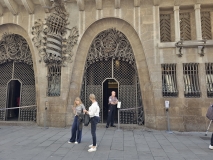
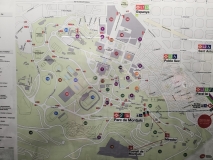
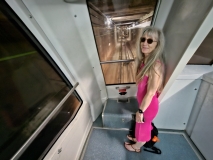
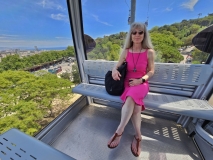
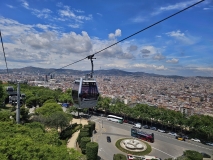
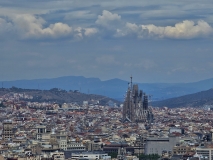

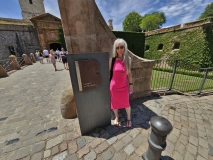
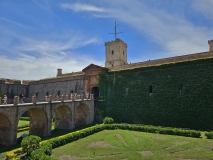
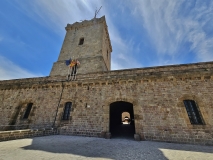
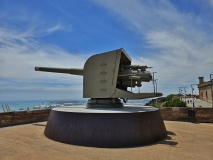
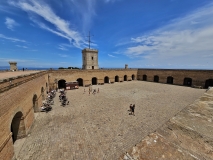
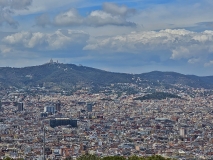
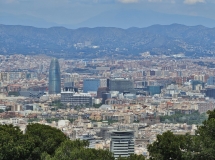
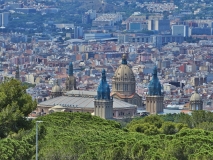
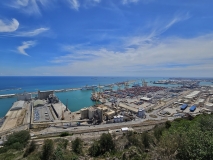
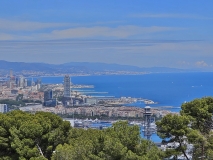

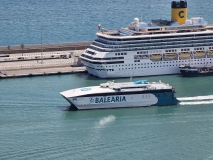
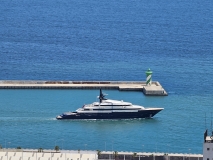
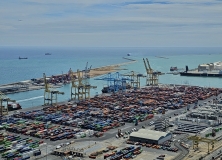
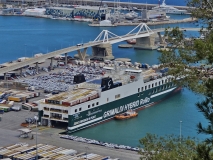

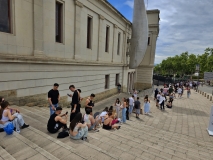
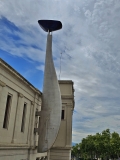
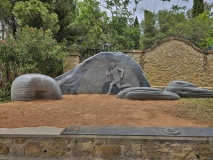
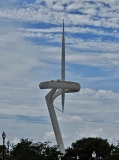
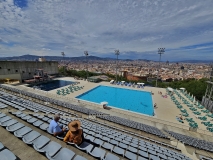

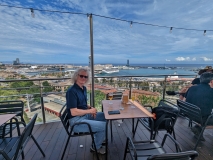
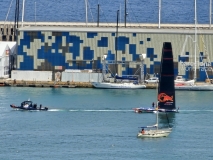
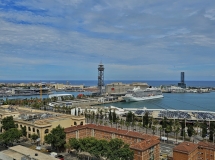
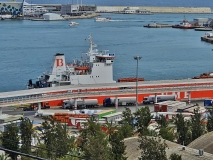
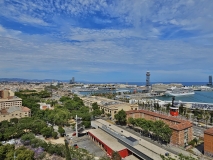

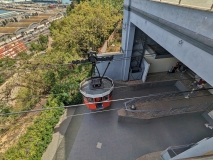
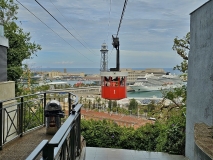
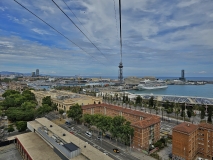
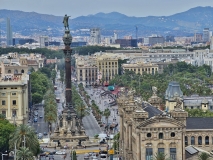

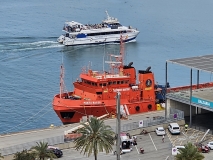
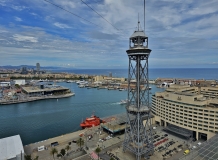
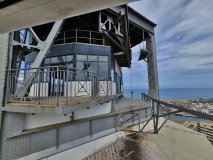
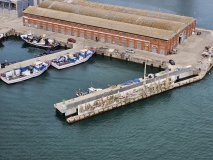
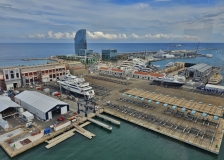
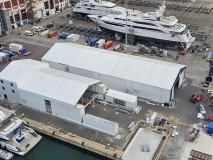
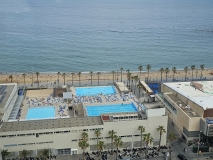
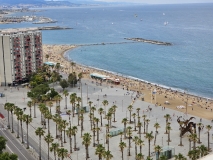
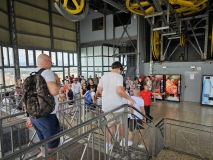
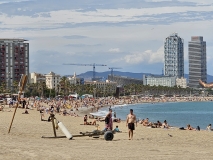
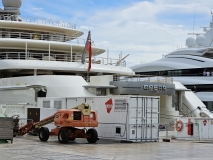
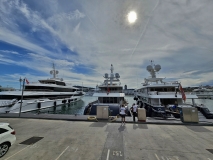
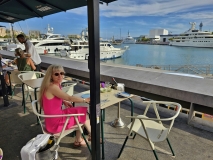
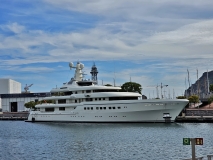

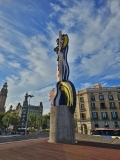
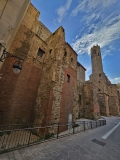
If your comment doesn't show up right away, send us email and we'll dredge it out of the spam filter.